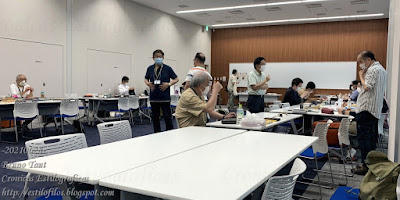Pocket pens were very successful and became a workhorse in the lineup of the companies. Platinum, on its side, showed this by implementing a wide variety of nib points in them.
 Eight different nibs for a single model. And there might have been some more nib points. Clockwise from top, music, soft fine, fine, sign, manifold, script, medium, and extra fine.
Eight different nibs for a single model. And there might have been some more nib points. Clockwise from top, music, soft fine, fine, sign, manifold, script, medium, and extra fine.
Such is the case on display today—eight different nib points in one single model. And there might have been some more.
 The Platinum pocket model. Albeit with minor variations, this model was in the Platinum catalog for about 10 years around 1970.
The Platinum pocket model. Albeit with minor variations, this model was in the Platinum catalog for about 10 years around 1970.
Out of those, four are labeled in English—music, sign, manifold, script. But how do they write? Are they significantly different to those we usually encounter?
 All these five nibs were made between 1967 and 1969. Their points are music, sign, medium, manifuld, and script.
All these five nibs were made between 1967 and 1969. Their points are music, sign, medium, manifuld, and script.
The following writing sample might answer those questions. The medium nib (中字) is shown as reference. All of them, might be worth notice, are quite rigid, and there are no major differences among them in this detail.
Sailor Fude pen – Diamine Teal
Bruno Taut
August 19th, 2021
etiquetas: Platinum, plumín, plumín musical
Bruno Taut
August 19th, 2021
etiquetas: Platinum, plumín, plumín musical





















































